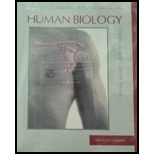
Concept explainers
Do you think the skeletons of Liang Bua Cave should be called a new species? Does it matter?
To review:
The consideration one would make while placing the skeleton from the Liang Bua cave in a different species and the reason for the necessity of the distinction.
Introduction:
Skeletons of fourteen prehistoric hominids were discovered in a cave called Liang Bua in 2004, named LB 1 to 14. These skeletons resemble the genus Australopithecus but also has similarities to the Homo species. They were classified as new species and named Homo floresiensis. However, some scientists argue that these specimens do not represent new species and are related to Homo sapiens.
Explanation of Solution
The prominent argument against accepting LB1 as another species was that the brain size was smaller than the modern humans. In case, they were different species evolved from H. erectus, their brain size should not have been affected. However, there are other factors to be considered. The factors that help in defining LB1 as different species are as follows:
1. Facial characteristics like heavy brow ridges, sloping forehead, and small chin are distinctive. The shape of the LB1 wrist resembled H. habilis (homo), which was necessary for absorbing the impact of shock and provide stability while using heavy tools. H. habilis is extinct for 1.6 million years.
2. The toes are short and in line like humans. The foot lacks arch is longer in proportion to the human foot. So their gait was high-stepping and running was poor. So, it is estimated that the LB1 evolved from H. erectus and diverged from the line of evolution that gave rise to modern humans.
3. LB1 skeletons were found in a cave with other skeletons of same characteristics, some tools, and skeleton of Stegodon, a small relative of modern elephants. This means the LBs could use tools, hunt and had coordination abilities that facilitate a hunt and interaction within the group. Their brain size may be small, but they could accomplish such tasks.
When all this information is taken into account, it can be safely estimated that LB1 represents a different species. Differentiating LB1 as a different species is very important. Some of the arguments to support the necessity of this distinction are as follows:
1. Naming LB1 as a different species showed that just the brain size is not an indicator of the difference in species. The coordination of different LB individual has overcome challenges from reduced brain size.
2. Naming LB1 as a different species paved a way for taking entire characteristics of the specimen before differentiating it into one species or another.
3. Evidence suggests the species had a larger brain before migrating to the island. So it will be worth finding whether the brain size was reduced as an evolutionary measure. The differentiation established an offshoot of H. erectus survived for a long period and may have interacted with the H. sapiens.
Therefore, based on all the information available on the LB1 skeleton, they do represent a different species. This distinction is necessary as it proved brain size is not the only indicator in the differentiating between different species.
Want to see more full solutions like this?
Chapter 22 Solutions
Human Biology: Concepts and Current Issues - With Access (Custom)
- Noggin mutation: The mouse, one of the phenotypic consequences of Noggin mutationis mispatterning of the spinal cord, in the posterior region of the mouse embryo, suchthat in the hindlimb region the more ventral fates are lost, and the dorsal Pax3 domain isexpanded. (this experiment is not in the lectures).a. Hypothesis for why: What would be your hypothesis for why the ventral fatesare lost and dorsal fates expanded? Include in your answer the words notochord,BMP, SHH and either (or both of) surface ectoderm or lateral plate mesodermarrow_forwardNot part of a graded assignment, from a past midtermarrow_forwardNot part of a graded assignment, from a past midtermarrow_forward
- please helparrow_forwardWhat does the heavy dark line along collecting duct tell us about water reabsorption in this individual at this time? What does the heavy dark line along collecting duct tell us about ADH secretion in this individual at this time?arrow_forwardBiology grade 10 study guidearrow_forward
 Biology: The Dynamic Science (MindTap Course List)BiologyISBN:9781305389892Author:Peter J. Russell, Paul E. Hertz, Beverly McMillanPublisher:Cengage Learning
Biology: The Dynamic Science (MindTap Course List)BiologyISBN:9781305389892Author:Peter J. Russell, Paul E. Hertz, Beverly McMillanPublisher:Cengage Learning
 Concepts of BiologyBiologyISBN:9781938168116Author:Samantha Fowler, Rebecca Roush, James WisePublisher:OpenStax College
Concepts of BiologyBiologyISBN:9781938168116Author:Samantha Fowler, Rebecca Roush, James WisePublisher:OpenStax College Biology Today and Tomorrow without Physiology (Mi...BiologyISBN:9781305117396Author:Cecie Starr, Christine Evers, Lisa StarrPublisher:Cengage Learning
Biology Today and Tomorrow without Physiology (Mi...BiologyISBN:9781305117396Author:Cecie Starr, Christine Evers, Lisa StarrPublisher:Cengage Learning Biology (MindTap Course List)BiologyISBN:9781337392938Author:Eldra Solomon, Charles Martin, Diana W. Martin, Linda R. BergPublisher:Cengage Learning
Biology (MindTap Course List)BiologyISBN:9781337392938Author:Eldra Solomon, Charles Martin, Diana W. Martin, Linda R. BergPublisher:Cengage Learning Biology: The Unity and Diversity of Life (MindTap...BiologyISBN:9781337408332Author:Cecie Starr, Ralph Taggart, Christine Evers, Lisa StarrPublisher:Cengage Learning
Biology: The Unity and Diversity of Life (MindTap...BiologyISBN:9781337408332Author:Cecie Starr, Ralph Taggart, Christine Evers, Lisa StarrPublisher:Cengage Learning





